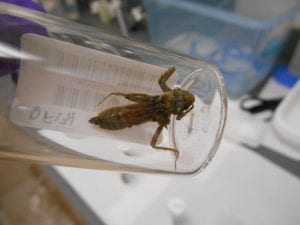Seelen EA, Chen CY, Balcom PH, Buckman KL, Taylor VF, Mason RP. Historic contamination alters mercury sources and cycling in temperate estuaries relative to uncontaminated sites. Water Res. 2020 Nov 27;190:116684. doi: 10.1016/j.watres.2020.116684. Epub 2020 Nov 27. PMID: 33310435; PMCID: PMC7855490.
Category Archives: Papers
Arsenic Metabolism and Transport in Plant Roots
Fischer S, Sánchez-Bermejo E, Xu X, Flis P, Ramakrishna P, Guerinot ML, Zhao FJ, Salt DE. 2020. Targeted expression of the arsenate reductase HAC1 identifies cell-type specificity of arsenic metabolism and transport in plant roots. J Exp Bot. 2021 Feb 2;72(2):415-425. doi: 10.1093/jxb/eraa465. PMID: 33038235; PMCID: PMC7853597.
Nutrient Influence on Mercury Availability
Chen CY, Buckman KL, Shaw A, Curtis A, Taylor M, Montesdeoca M, Driscoll C. The influence of nutrient loading on methylmercury availability in Long Island estuaries. Environ Pollut. 2021 Jan 1;268(Pt B):115510. doi: 10.1016/j.envpol.2020.115510. Epub 2020 Sep 2. PMID: 33221612.
Dragonflies Reveal Mercury Levels in National Parks
 A citizen science program that began over a decade ago has confirmed the use of dragonflies to measure mercury pollution, according to a study in Environmental Science & Technology. The original project was launched by Dr. Sarah Nelson at the University of Maine and the Schoodic Institute in 2007. Dartmouth’s Toxic Metals Superfund Research Program developed a regional effort in New Hampshire and Vermont in 2010. The project was expanded nationally by the National Park Service and the U.S. Geological Survey. More details on 10 years of citizen science mercury data using dragonfly larvae biosentinels!
A citizen science program that began over a decade ago has confirmed the use of dragonflies to measure mercury pollution, according to a study in Environmental Science & Technology. The original project was launched by Dr. Sarah Nelson at the University of Maine and the Schoodic Institute in 2007. Dartmouth’s Toxic Metals Superfund Research Program developed a regional effort in New Hampshire and Vermont in 2010. The project was expanded nationally by the National Park Service and the U.S. Geological Survey. More details on 10 years of citizen science mercury data using dragonfly larvae biosentinels!
Single Cell RNA-seq Analysis Reveals Adverse Effects from Pre-Natal Arsenic Exposure…
Kevin S Hsu, Britton C Goodale, Kenneth H Ely, Thomas H Hampton, Bruce A Stanton, Richard I Enelow. 2020. Single cell RNA-seq analysis reveals that prenatal arsenic exposure results in long-term, adverse effects on immune gene expression in response to Influenza A infection. Toxicological Sciences. Toxicol Sci 2020 Jun 8;kfaa080. doi: 10.1093/toxsci/kfaa080. Online ahead of print. PMID: 32514536.
Relationship Between in Utero Arsenic Exposure and Growth During the First Year of Life…
Muse ME, Li Z, Baker ER, Cottingham KL, Korrick SA, Karagas MR, Gilbert-Diamond D. 2020. Relation Between In Utero Arsenic Exposure and Growth During the First Year of Life in a New Hampshire Pregnancy Cohort. Environmental Research. Environ Res. 2020 Jan; 180:108604. doi: 10.1016/j.envres.2019.108604. Epub 2019 Jul 22. PMID: 31710845.
Nutrient-Toxic Element Mixtures and the Early Postnatal Gut Microbiome…
Dartmouth Superfund Program (SRP) researchers Brian Jackson and Margaret Karagas and Trainee Hannah Laue (lead author) are co-authors of the paper Nutrient-Toxic Element Mixtures and the Early Postnatal Gut Microbiome and in a United States Longitudinal Birth Cohort. The study concluded that “Early postnatal toxic and nutrient elemental exposures are associated with differences in the infant microbiome. Further research is needed to clarify the whether these alterations are a biomarker of exposure or if they have implications for child and lifelong health.” The paper was published in the journal Environment International.
Mercury Levels in Freshwater Fish: Estimating Concentration with Fish Length…
Dartmouth Superfund Research Program (SRP) researchers Celia Chen and Kate Buckman are co-authors of the paper Mercury Levels in Freshwater Fish: Estimating Concentration with Fish Length to Determine Exposures Through Fish Consumption. According to the paper, “…many studies only measure adults to characterize the health of locally fished populations, omitting information about how local fish bioaccumulate mercury relative to their growth. In this study, we sought to establish length: total mercury (THg) concentration relationships in juvenile and adult fish of four genera (sunfish, yellow perch, white perch, and killifish) across six freshwater pond systems of Nantucket Island to determine safe consumption sizes across species and environmental conditions.” the paper was published in the journal Archives of Environmental Contamination and Toxicology.
Dragonfly Larvae Biosentinels of Mercury Bioaccumulation in Northeastern & Adirondack Lakes…
Dartmouth Superfund Research Program (SRP) researcher and director Celia Chen is co-author of the paper Dragonfly Larvae as Biosentinels of Hg Bioaccumulation in Northeastern and Adirondack Lakes: Relationships to Abiotic Factors. The study sampled lake water and dragonfly larvae in 74 northeastern US lakes that are part of the US EPA Long-Term Monitoring Network to examine whether Dragonfly larvae can serve as biosentinels for Mercury (Hg) in biota. The paper was published in the journal Ecotoxicology.
Mercury and Selenium Concentrations, and Selenium:mercury Molar Ratios in Small Cetaceans Taken Off St. Vincent, West Indies
Dartmouth Superfund Program (SRP) researcher Brian Jackson is co-author of the paper Mercury and Selenium Concentrations, and Selenium:mercury Molar Ratios in Small Cetaceans Taken Off St. Vincent, West Indies. According to the paper, the “high THg (total mercury) concentrations in cetacean tissues in this study, along with the high number of small cetaceans that are taken for human consumption each year, and the frequency at which cetacean products are consumed, suggests that consumption of small cetaceans in St. Vincent is a human health issue that warrants further investigation. Future policy changes or advisories may be needed to inform the public, especially regarding the consumption of killer whales and short-finned pilot whales.” The paper is published in the journal Environmental Research.